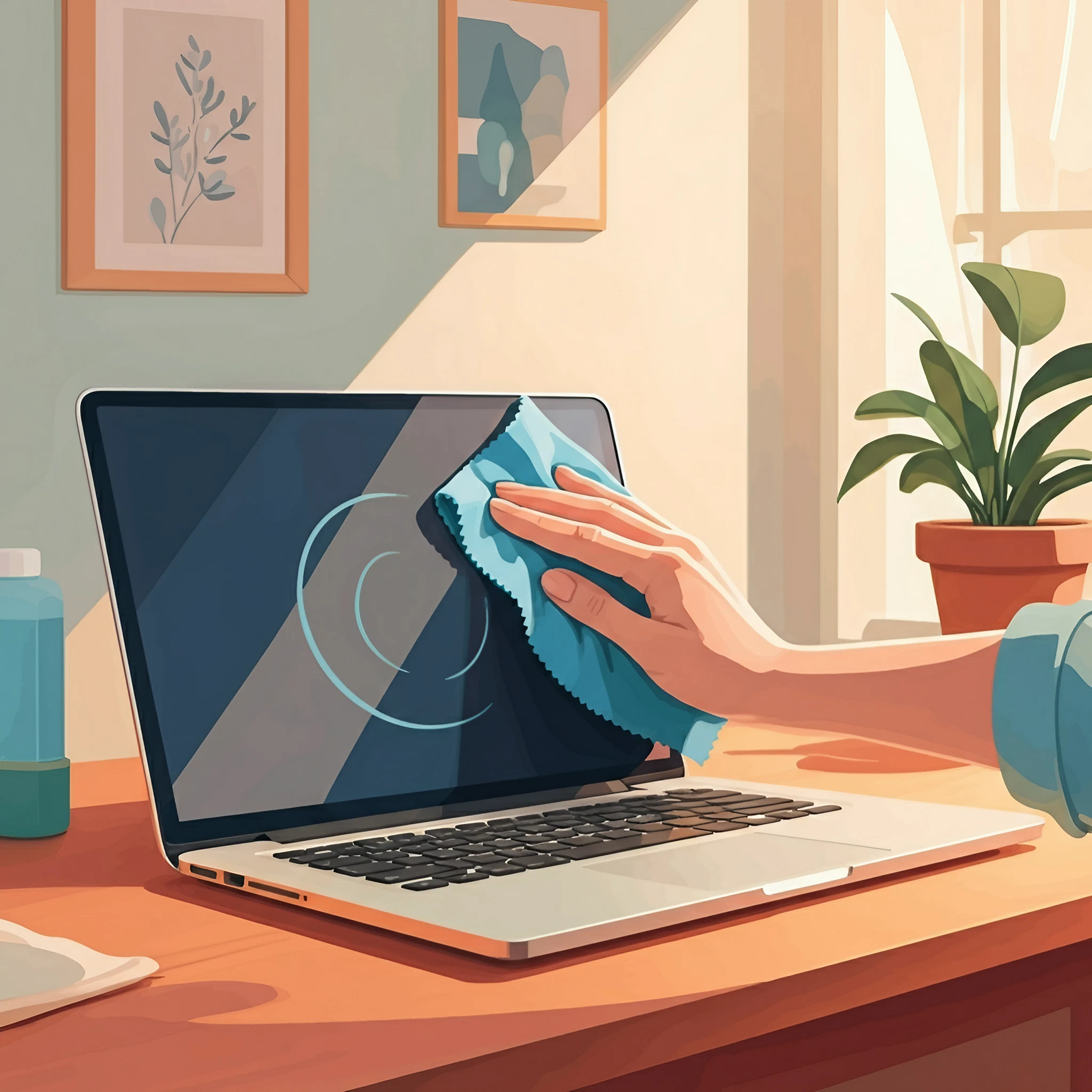Your laptop is your trusted companion in work, study, and entertainment, but over time, smudges, fingerprints, and dust can cloud your screen, making it harder to enjoy that crystal-clear display. The good news? Cleaning your laptop screen is quick and easy if done the right way. Here’s a step-by-step guide to help you clean your laptop screen safely, ensuring its longevity and performance.
Why Should You Clean Your Laptop Screen?
Your laptop screen is exposed to daily wear, attracting dust, grime, and oil from your fingers. Not only does that impact its clarity, but it can also harbor bacteria. Regularly cleaning your screen:
- Enhances visibility and reduces strain on your eyes.
- Extends the lifespan of your screen.
- Maintains hygiene by preventing the accumulation of bacteria.
Essential Materials Needed
Before you start, gather these basic cleaning materials:
- Soft microfiber cloth (lint-free and non-abrasive)
- Distilled water (or filtered water to avoid mineral deposits)
- Optional: A cleaning solution specifically designed for screens (free of ammonia, acetone, or alcohol)
Step-by-Step Guide to Cleaning Your Laptop Screen
Step 1: Power Off and Unplug Your Laptop
Always turn off your laptop and unplug it from the power source before cleaning. This minimizes the risk of electrical damage and makes it easier to see dust and smudges on a dark screen.
Step 2: Wipe Gently with a Dry Microfiber Cloth
Use a clean, soft microfiber cloth to gently remove loose dust and smudges. Avoid using towel paper or tissues, as these can scratch the screen. Wipe in circular motions for the best results.
Step 3: Lightly Dampen the Cloth (If Necessary)
If stubborn smudges remain, lightly dampen one corner of the microfiber cloth with distilled water. Do not use tap water as it contains minerals that can leave streaks or damage the screen. Remember, the cloth should only be slightly damp, not soaked.
Step 4: Wipe the Screen Carefully
Gently wipe the screen using the damp portion of the cloth. Don’t press too hard, as excessive pressure can damage the delicate pixels beneath the surface. Pay extra attention to heavily smudged areas.
Step 5: Avoid Using Harsh Chemicals
Never use regular household cleaners, window sprays, or alcohol-based products on your laptop screen. These can strip protective coatings and cause discoloration or permanent damage.
Step 6: Allow the Screen to Air Dry
Once the screen looks spotless, leave it to air dry completely before closing the laptop. This ensures no moisture gets trapped between the screen and keyboard.
Precautions to Keep in Mind
To protect your laptop screen from damage while cleaning:
- Always unplug and power down the laptop before cleaning.
- Avoid spraying liquids directly onto the screen to prevent drips from seeping into the hardware.
- Use only soft materials, like microfiber cloths, instead of abrasive fabrics like paper towels.
- Handle the screen delicately to prevent pressure damage.
Bonus Tips for Keeping Your Screen Clean Longer
- Wash your hands before using your laptop to avoid transferring oils and dirt.
- Keep food and drinks away to prevent accidental splatters.
- Store your laptop in a clean, dust-free environment when not in use.
By following these simple steps and precautions, your laptop screen will stay clean, clear, and functional for years to come.
Want More Practical Tech Tips?
For more helpful guides and advice, stay tuned to our blog. And if you found this guide useful, share it with your fellow laptop users! Clean laptops = happy laptops. 😊








